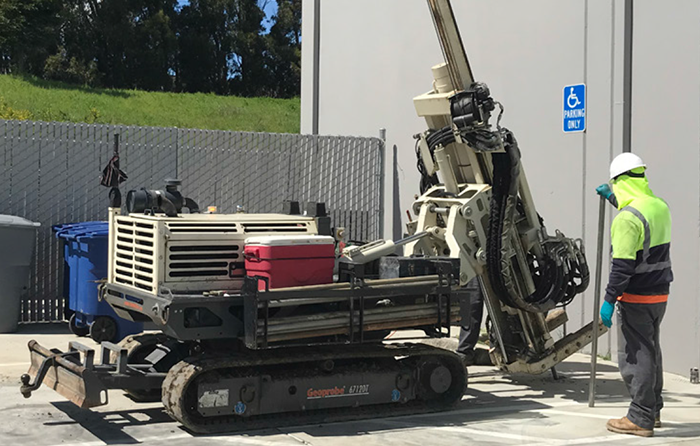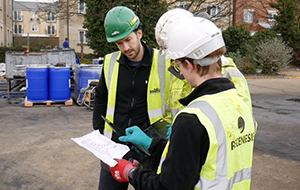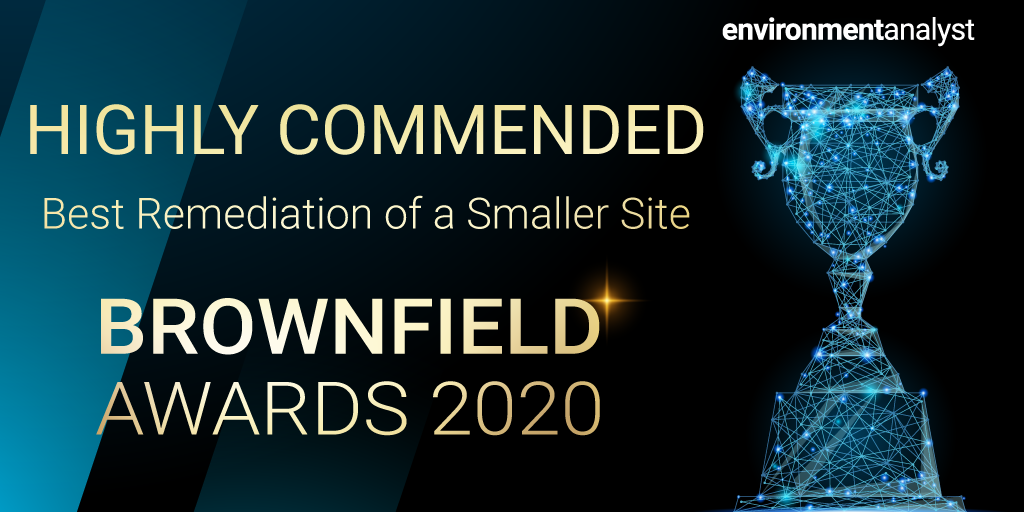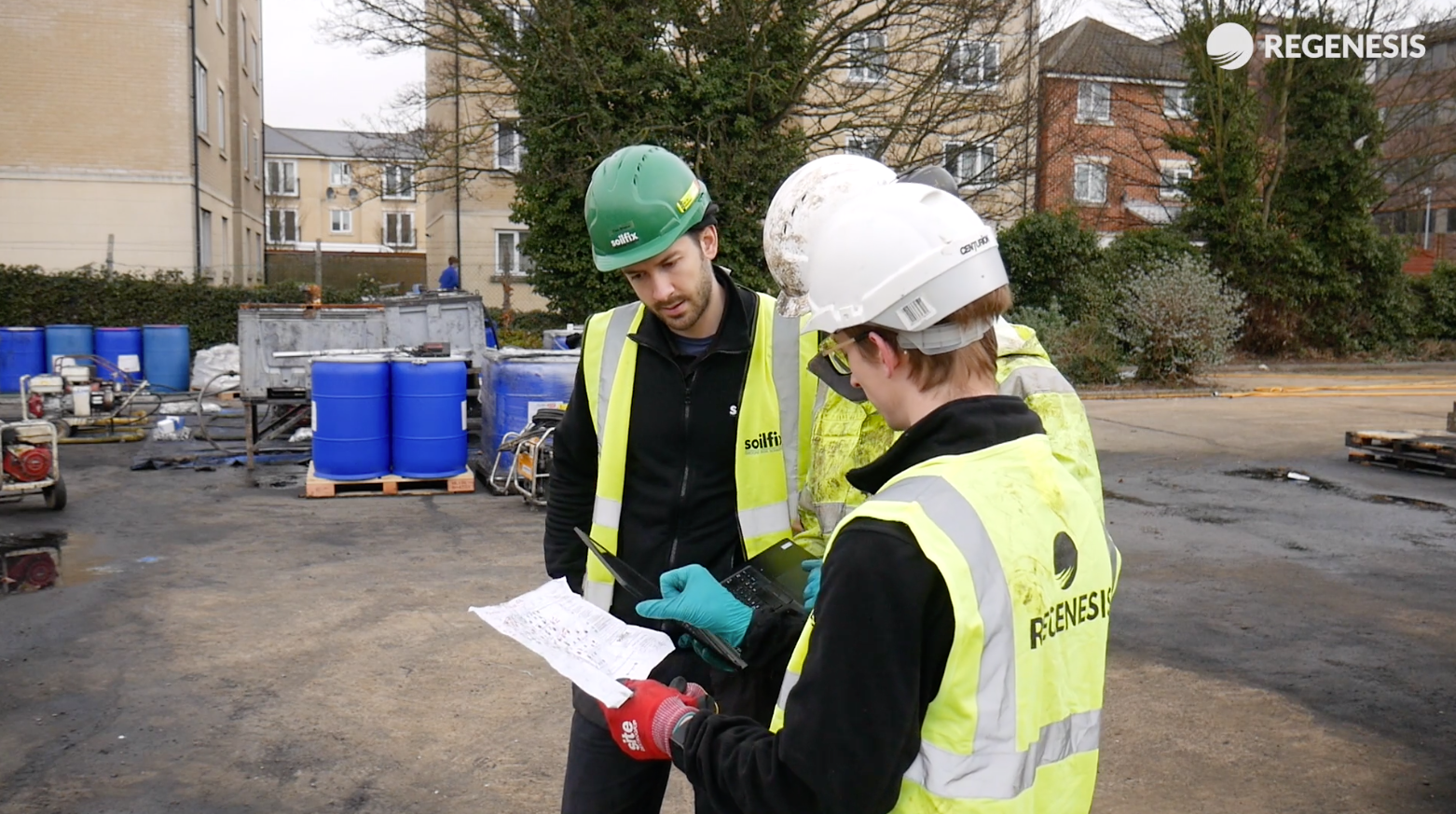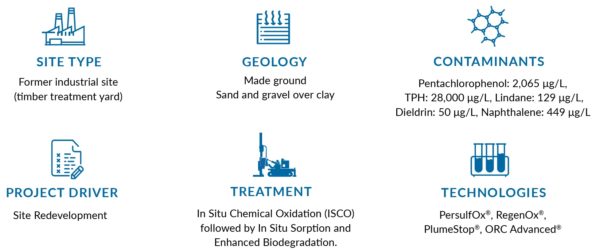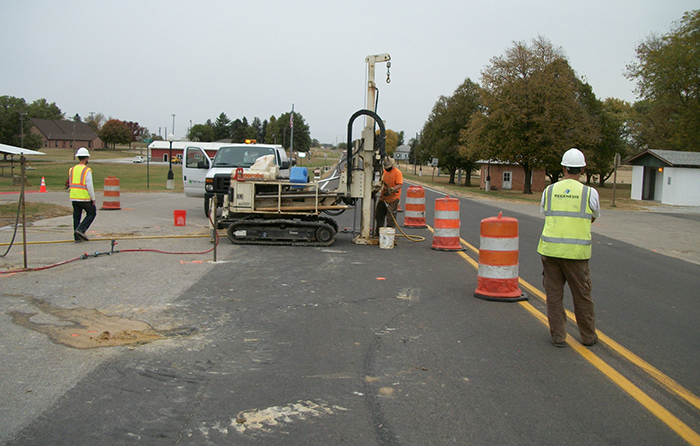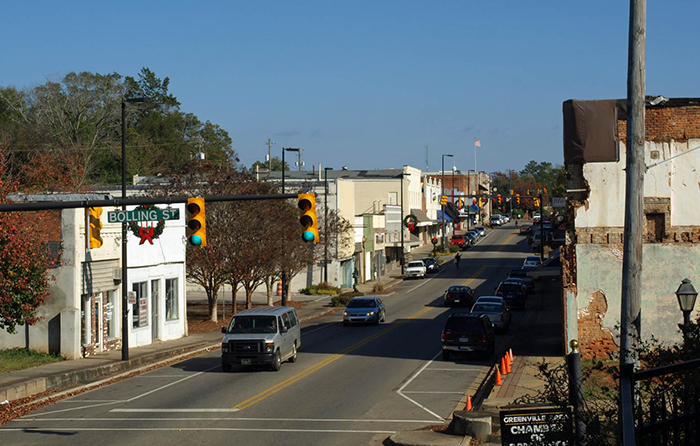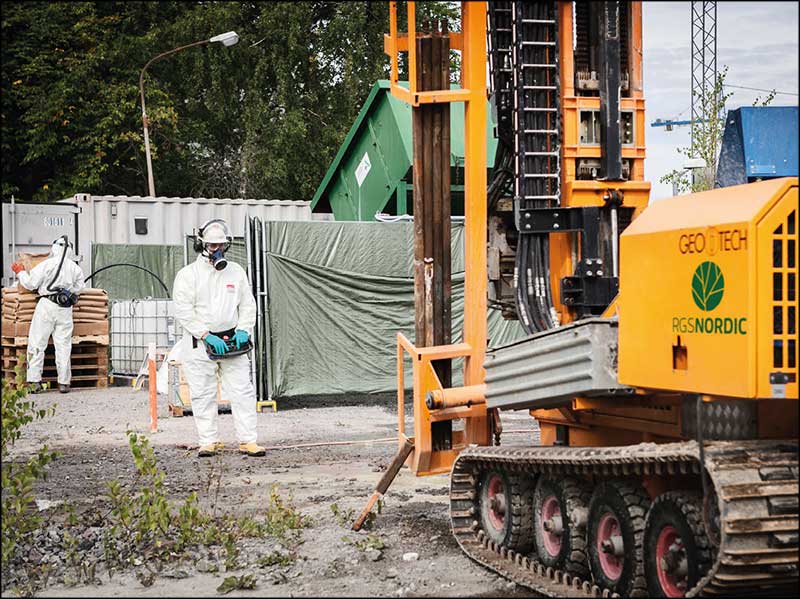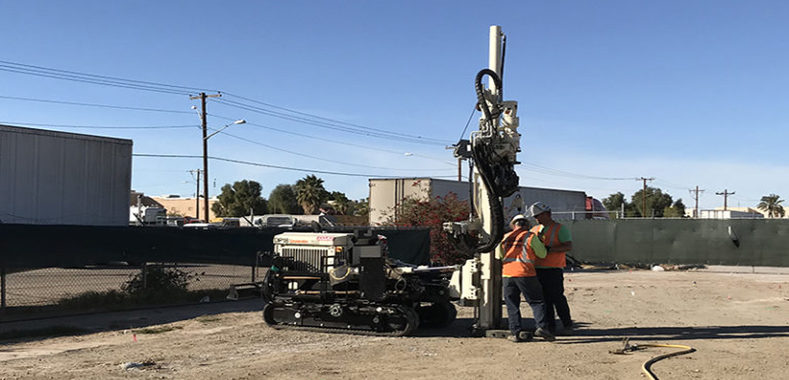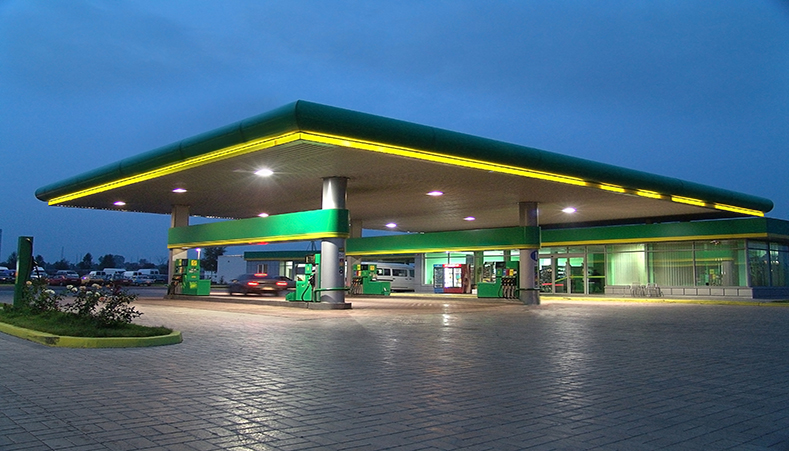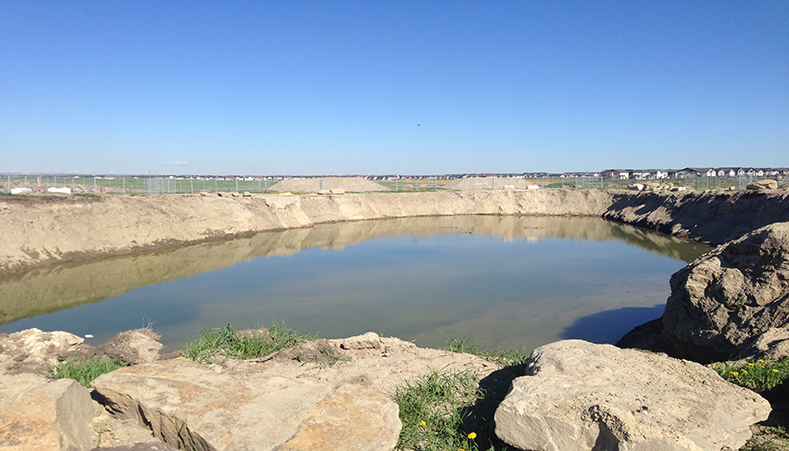High-Mass Petroleum Hydrocarbons Treated to Achieve Closure
Case Study Highlights:
-
PersulfOx injected into subsurface during 3 treatment rounds, sequenced ±2 months apart
-
Toluene reduced by an average of 94% and below the toluene Site-Specific Target Levels (SSTLs) in all 5 performance monitoring wells
-
Toluene remains below its SSTL following the injection of PersulfOx

A former US electric service company reported a release during a UST removal completed at the site in 1988. Previous remediation by others included aggressive fluid vapour recovery events completed from 2004 to 2008 and from 2019 to 2020 to address the release, along with groundwater monitoring. Despite these efforts, high concentrations of petroleum hydrocarbons (PHC) remained. Following years of remediation, the final selection and successful application of PersulfOx® effectively reduced high concentrations of toluene in groundwater below the site cleanup goal. The remediation achieved the site target cleanup objectives and received regulatory closure for the decades-old release incident.
98% PCE Reduction Achieved After 16 Months
The site is a former dry-cleaning supply distribution business that operated from 1957 to 2000. The former facility provided laundry chemicals, including detergents and spotting chemicals, packaging products such as hangers and polyethylene bags, and bulk deliveries of tetrachloroethene (PCE). Remediation at the site was completed in two primary phases. The first phase was a targeted excavation and soil mixing event focused on addressing the highly impacted shallow soils and smear zone. The second phase was focused on treating the groundwater PCE plume onsite and preventing further plume migration offsite.
Case study highlights:
- High PCE concentrations were detected in soil and groundwater during a site investigation
- A pragmatic, phased approach was used to target PCE in soil and groundwater
- The multi-component treatment was immediately effective and has maintained 98% PCE reduction in onsite groundwater
4m 23s reading time

Pesticides, VOCs and petroleum hydrocarbons remediated with a suite of in situ technologies
Shallow aquifer treatment using RegenOx, PersulfOx, ORC Advanced and PlumeStop at a former industrial site, UK
This project was Highly Commended in the Brownfield Awards 2020 in the category of ‘Best Remediation of a Smaller Site’.
Located in East Anglia, this industrial site had been occupied by a timber yard, incinerator, fuel storage tanks and a saw mill. These were later demolished and the site-use changed to light commerical and a car park for a FTSE 100 Company. It was decided that the site should be prepared for redevelopment and a due diligence site investigation was carried out by Ramboll to support lease surrender.
It was discovered that in a corner of the site, the soils and groundwater were impacted with a wide range of contaminants including petroleum hydrocarbons, volatile organic compounds (VOC’s) including BTEX, trimethylbenzene, pentachlorophenol and a mix of pesticides, including organochlorine pesticides (Dieldrin) and gamma-HCH (Lindane). Soilfix worked closely with Ramboll and REGENESIS to deliver a tailored multi-phase remediation solution for the site, including in situ remediation using a suite of REGENESIS’ remediation technologies.
REGENESIS services team carried out the groundwater remediation works on-site which included a combination of in situ chemical oxidation, sorption and enhanced biological degradation. Click the case study link to find out more, or watch the project video.
7m 3s reading time
“The project was a great success. Not only did we meet the betterment-based objectives that we agreed with the Client’s consultant Ramboll; for many of the contaminants we ended up meeting the stringent criteria that were originally derived by the risk assessment. This enabled the Client to surrender their lease on their programme. We felt this was largely down to the project team approach that we took with REGENESIS, from conception through to validation and completion of the project.”
Steve Jackson, Director, Soilfix
Case study highlights:
- Soilfix, Ramboll and REGENESIS worked together to develop a tailored multi-phase remediation solution.
- Integrated application of remediation products: RegenOx, PersulfOx, PlumeStop and ORC Advanced.
- Validation results show a rapid and sustained reduction in the concentration of all contaminants of concern (COCs).
- Remedial targets were achieved in time for lease surrender, with all stakeholders satisfied with the works completed.
Petroleum Hydrocarbon Plume Treated to Non-Detect within 50 Days
This case study reviews an active gas station in Nebraska that was adversely impacted by a dissolved‑phase, hydrocarbon plume. The treatment solution from REGENESIS was successful in reducing the concentrations of BTEX, TPH-G, and MTBE to non-detect levels. REGENESIS conducted a thorough and innovative DVT program prior to remediation in order to ensure an effective remedial design. They used the DVT to produce a design which fit the precise needs of the site as well as the client’s budget. After the successful treatment, the consultant continued to monitor the groundwater trends until the Nebraska Department of Environment and Energy (NDEE) granted the site closure status. The on-site gas station has remained open for business.
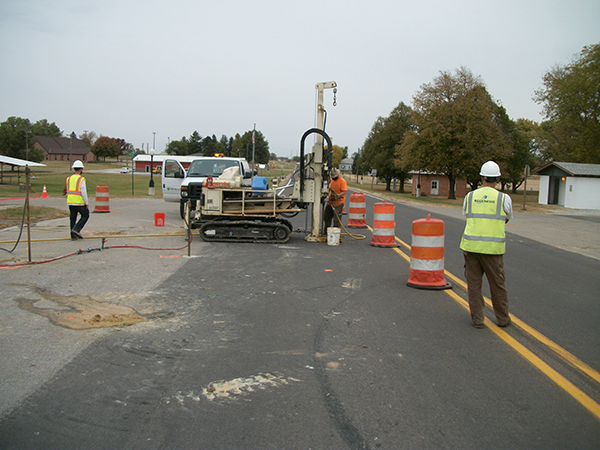
Case study highlights:
- Thorough Design Verification Testing (DVT) program helped to create a unique design for effectively treating the contaminant plume.
- Cost-effective design and application required a single application event.
- The remedial approach successfully treated a 200 ft. long dissolved phase hydrocarbon plume within the first 50 days.
6m 52s reading time
Cost-Effective Treatment To Address PCE At Former Dry Cleaning Site
This case study reviews a former dry cleaning site in an upscale Chicago suburb was contaminated with chlorinated solvents, specifically perchloroethylene. The former dry cleaner location is in a busy commercial area on a major thoroughfare and adjacent to upscale residential townhomes. Various treatments including soil excavation and removal and thermal desorption were considered, but were not feasible because they were too costly and disruptive to businesses and residents.

Case study highlights:
- Soil mixing with PersulfOx cost less than half of the thermal desorption treatment.
- Very aggressive remediation goals were met on a quick timeline.
- One application of PersulfOx was powerful enough to reduce contaminant levels from 18,000 ppm to 150 ppm.
Innovative Approach Reduces Benzene To Achieve Closure
This case study reviews a gas station site in Greenville, Alabama where petroleum hydrocarbon contamination was present in the subsurface for decades. PersulfOx, PlumeStop, and ORC Advanced were applied to quickly reduce benzene levels to non-detect, resulting in successful regulatory closure. This site is part of an environmental liability transfer and Antea Group®, an international engineering and environmental consulting firm, assumed the liability for this site. Antea Group required an effective remedial solution that would result in rapid site closure. Antea Group partnered with REGENESIS® to create a remedial design using an in situ chemical oxidation (ISCO) treatment paired with an aerobic bioremediation technology to ensure a complete treatment of this site.

Case study highlights:
- Exceptional benzene reduction using PersfulOx quickly reduced contaminant levels within a short timeframe.
- Design Verification Testing (DVT) fine-tuned the application to increase effectiveness.
- Addition of PlumeStop application ensured against back diffusion to help reach site closure.
5m 16s reading time
In Situ pilot remediation of gasworks impacted groundwater, Stockholm, Sweden
Introduction
In the north-east of Central Stockholm, a historical industrial site was earmarked for redevelopment. Part of the site comprised a former gasworks, where historical operations have caused a complex mix of contaminants to impact the surrounding soil, groundwater and shoreline sediments.
The large site is due to be redeveloped in a series of parcels including a road, industrial park, residential homes and schools. Remediation is required to ensure the human health risk is removed as part of the restoration of the site. The impacted groundwater also represents an environmental risk and requires treatment. Risk assessments were used to determine that remediation was required to a depth of 20m BGL. The geology of the site is heterogeneous, comprising a shallow made ground, a clay layer and underlying coarse sands.

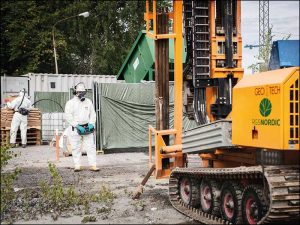
The sands are highly impacted with a range of gas works contamination included creosote NAPLs and high levels of benzene. The saturated clays are also impacted with dissolved phase contamination. Due to contaminants, concentrations and superficial geologies, a range of remedial methods would be required to ensure the most appropriate was used in each scenario. Therefore, RGS Nordic engaged REGENESIS to design a series of pilot tests utilising several in-situ methods. The results from these trials would then be used to shape the full-scale remediation strategy for the entire gasworks site area.
Combined In Situ Remediation Approach and Planning
REGENESIS proposed a pilot-scale combined remediation approach comprising:
- Enhanced desorption using PetroCleanze to target high concentrations of soil-bound contaminants of concern (COC’s) in the sands,
- In Situ Chemical Oxidation (ISCO) using both RegenOx and PersulfOx to target medium to high dissolved phase and soil-bound PAHs in the sandy soil, and
- Enhanced aerobic degradation using ORC-Advanced to target the low dissolved phase benzene and naphthalene concentrations in the clay.
Results
Groundwater samples were collected 3-4 months after the application of REGENESIS remediation products, see graphs 1 to 3. The results are displayed below:
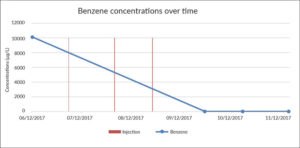
Enhanced Desorption using PetroCleanze
>95% reduction in dissolved phase benzene was achieved with the addition of PetroCleanze. The treatment for PAHs was found to be less effective, primarily due to the low baseline PAH concentrations which were below the optimum treatment concentration range for PetroCleanze.
ISCO using RegenOx and PersulfOx
>90% reduction in dissolved phase benzene and PAHs was observed using PersulfOx. In the RegenOx trial, dissolved benzene concentrations were found to decrease by 80%, while PAH levels increased slightly, potentially due to large volumes of desorbed COCs being released into groundwater post-treatment.
Enhanced Aerobic Biodegradation using ORC-Advanced
A sustained reduction in Naphthalene and benzene (despite suspected influx into the test area) was achieved using ORC-Advanced in the saturated clay.


Conclusion
- A wide range of contaminant concentrations were treated effectively using a combined in-situ remediation approach.
- Substantial reductions in COC concentrations were achieved despite the challenging geological setting.
- The results from the pilot tests show that all areas of the gasworks site can be successfully remediated in-situ using REGENESIS remediation products, providing significant cost savings when compared with conventional techniques
Remediation Goals Achieved with Combined Remedy Approach
Soil Mixing and ISCO Approach Achieves Arizona DEQ Closure Levels
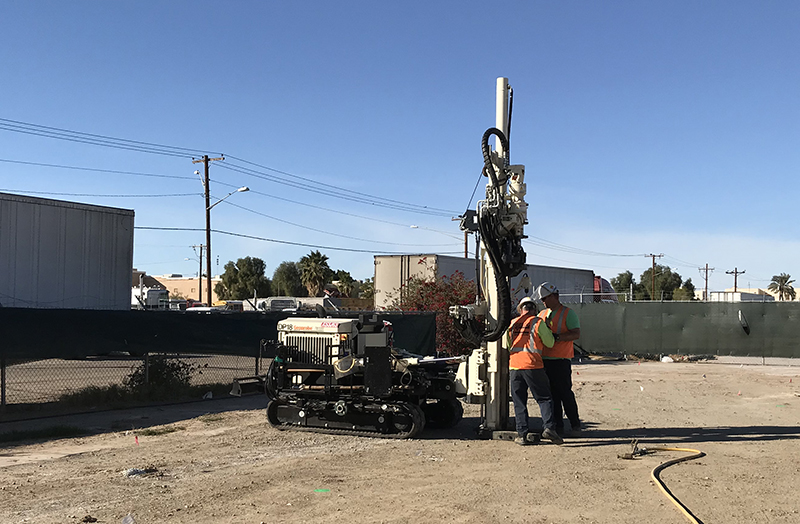 This case study reviews an active Underground Storage Tank (UST) case with the Arizona Department of Environmental Quality (ADEQ), where the site needed to meet ADEQ closure levels quickly in order to seek risk-based closure as part of a property transaction. After performing remedial assessment activities, the consulting firm Antea Group selected a combined remedy approach from REGENESIS, which included soil mixing using RegenOx® and H2O2 in the source zone and ISCO injections using PersulfOx® in the core plume. The solution from REGENESIS achieved ADEQ Closure levels for the site and now Antea Group is seeking a risk-based closure.
This case study reviews an active Underground Storage Tank (UST) case with the Arizona Department of Environmental Quality (ADEQ), where the site needed to meet ADEQ closure levels quickly in order to seek risk-based closure as part of a property transaction. After performing remedial assessment activities, the consulting firm Antea Group selected a combined remedy approach from REGENESIS, which included soil mixing using RegenOx® and H2O2 in the source zone and ISCO injections using PersulfOx® in the core plume. The solution from REGENESIS achieved ADEQ Closure levels for the site and now Antea Group is seeking a risk-based closure.
This case study features the following:
- Significant contaminant reductions achieved in both the source area and core plume
- 8-10 weeks of time saved compared to alternative approaches
- $500,000 saved in project costs compared to alternative Electrical Resistance Heating (ERH) approach being considered
Innovative Combined Amendment Approach Successfully Applied to Treat PHC Levels
Project Highlights
- Site previously treated with a series of RegenOx® and ORC Advanced® amendments significantly reduces plume concentrations. Remaining hot spot was then treated with turn-key injection application of PersulfOx® and ORC Advanced technologies bringing closure to facility
- Successful turn-key treatment of offsite hot spot completed within five days
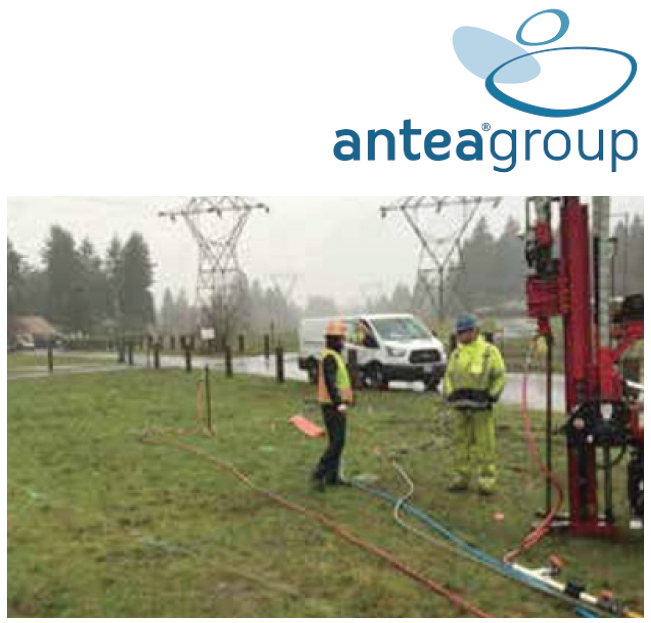
Project Summary
An active gas station, identified by the State of Washington Department of Ecology as one of five LUST sites within one mile of Vancouver’s three groundwater monitoring wells, had entered into the state’s Voluntary Cleanup Program (VCP) in 2006 subsequent to shutdown of the onsite air-sparge/vapor extraction (AS/VE) system. This system had historically been employed at the site to supply oxygen for remedial purposes and address subsurface contamination that was first discovered beneath the dispenser islands in 1993. While prior applications of RegeneOx and ORC Advanced were effective in mitigating onsite contamination, PHC levels remained above MTCA criteria offsite hindering achievement of regulatory closure.
Antea® Group—the environmental consulting firm charged with remediation—partnered with REGENESIS® to implement a remedial strategy and technical design, which included the turn-key injection application of PersulfOx and ORC Advanced technologies to address petroleum hydrocarbons (PHCs) using an in situ chemical oxidation (ISCO) and enhanced aerobic remediation approach. The hot spot injection application included one event of PersulfOx coapplied with ORC Advanced, using direct push technology (DPT) injection points throughout the 3200 sq. ft. treatment area through 40 DPT injection points.
Technology Description
RegenOx – An injectable two-part advanced in situ chemical oxidation (ISCO) reagent that combines a solid sodium percarbonate-based alkaline oxidant (Part A) with a liquid mixture of sodium silicates, silica gel and ferrous sulfate (Part B), resulting in a powerful technology that treats and destroys a wide range of target contaminants including both petroleum hydrocarbons and chlorinated compounds.
PersulfOx – An advanced ISCO reagent and all-in-one product with a built-in patented catalyst destroys organic contaminants found in groundwater and soil through abiotic chemical oxidation reactions.
ORC Advanced – An engineered, oxygen-release compound designed specifically for enhanced, in situ aerobic bioremediation of petroleum hydrocarbons in groundwater and saturated soils. ORC Advanced produces a controlled release of molecular oxygen accelerating aerobic biodegradation processes up to 100 times f aster than natural degradation rates.
Results
For the final application event, following five on-site working days, REGENESIS completed the hot spot application process during which 9,753 lbs. of PersulfOx and 2,240 lbs. of ORC Advanced were applied to the designated treatment area. First quarter sampling results post-application showed concentrations below MTCA criteria. Following three quarters of monitoring, remediation of this site will be complete.
About the Client
Antea Group is an international engineering and environmental consulting firm specializing in full-service solutions in the fields of environment, infrastructure, urban planning and water. With more than 3,000 employees in over 100 offices around the world, Antea Group serves clients ranging from global energy companies and manufacturers to national governments and local municipalities.
PHCs at Former Farming Site Successfully Remediated Using PersulfOx®
Project Highlights
- Introduction of PersulfOx® resulted in reduction of PHCs in fractured bedrock, meeting site remediation goals
- High sulphate concentrations in groundwater resulted from the application of PersulfOx which is assisting natural attenuation of any residual petroleum hydrocarbons
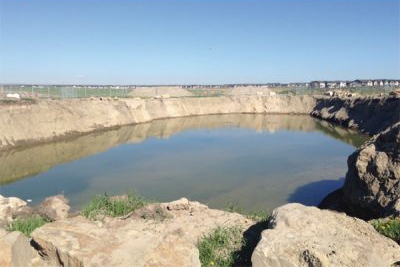
Project Summary
A former farming facility located in Calgary, Alberta contained three above ground storage tanks (ASTs) and two pump islands. Environmental assessments related to the planned urban redevelopment of the former farming facility revealed contamination of the soil and groundwater beneath the site with petroleum hydrocarbons (PHCs) due to release(s) from the former ASTs. During a remedial excavation, PHC impacts above the applicable vapor inhalation guidelines were identified within the fractured bedrock. Given the nature and depth of the bedrock, the remedial excavation was no longer feasible. Therefore, PersulfOx, a proprietary chemical oxidant chemical, was utilized for in situ treatment of soil and groundwater within the excavation to reduce the remaining PHC concentrations below the commercial vapor inhalation guidelines.
Based on the subsurface investigations and monitoring activities prior and subsequent to the chemical application, it was determined that PersulfOx was effective in remediation of PHC impacts within the fractured bedrock in an open excavation, within a short period of time and under the low groundwater temperatures. Following treatment with PersulfOx, reduction or the absence in PHC concentrations has been observed in soil or groundwater samples and all post-remediation concentrations have remained below the vapor inhalation pathway guidelines for commercial use. However, high sulphate concentrations were identified as a result of this chemical application which over the long term would assist in the natural attenuation of any residual petroleum hydrocarbons.
Technology Description
PersulfOx is a chemical oxidant that rapidly reduces the mass of the contaminants. This chemical consists of 90% of sodium persulfate and 10% catalyst powder. PersulfOx is very effective in rapid oxidation of petroleum hydrocarbons in both soil and groundwater.
Results
Reduction of PHC concentrations by oxidation using PersulfOx facilitated the urban development of the former farming facility. The high sulphate concentrations are expected to attenuate to background concentrations with time as sulphate is an electron acceptor in the natural attenuation process of petroleum hydrocarbons.

 Americas
Americas Europe
Europe Français
Français Deutsch
Deutsch Italiano
Italiano Español
Español
